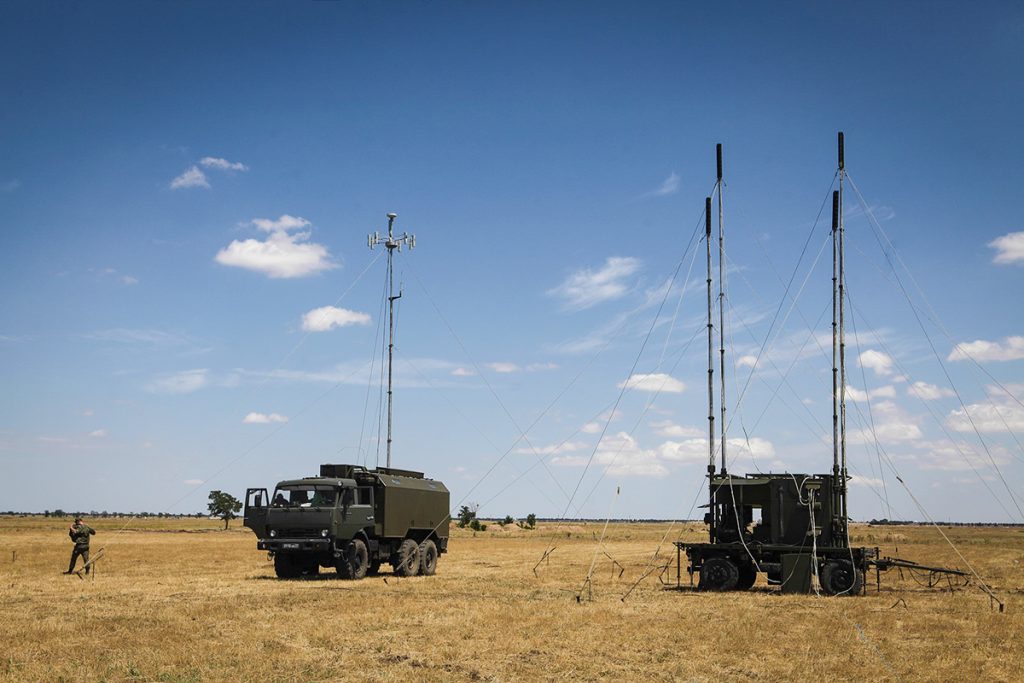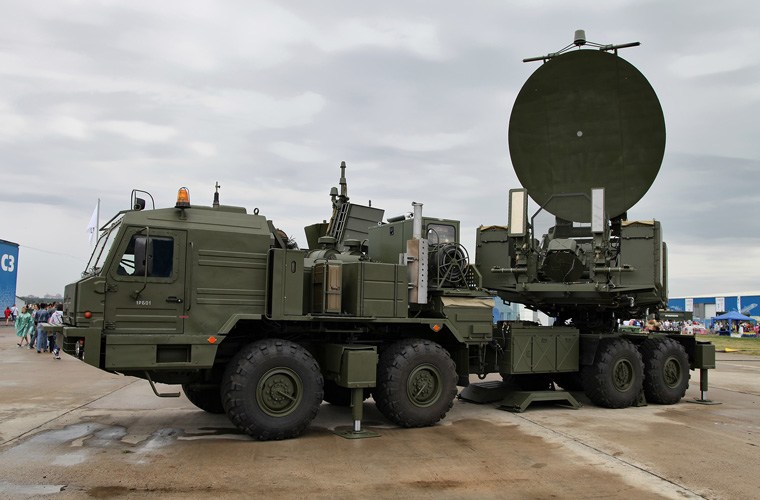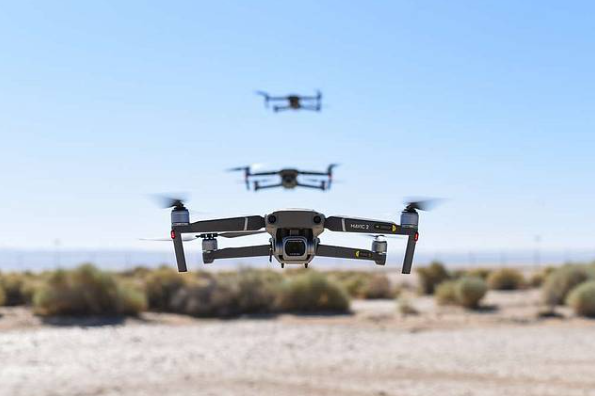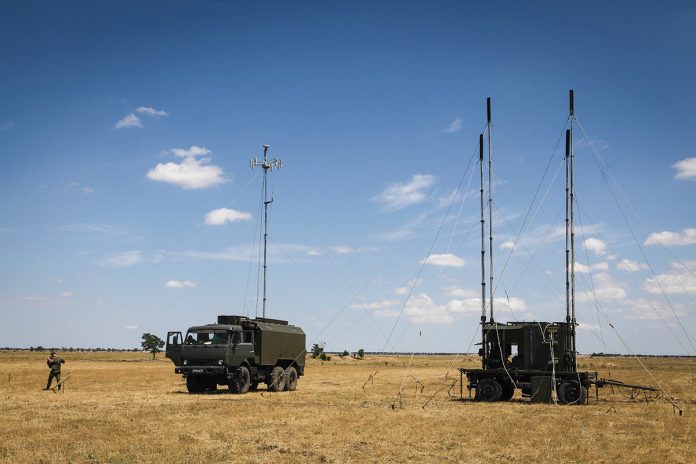
What cost $10 million, silences GPS over miles, and just got blown to pieces? That would be the latest Ukraine strike on Russia’s rare R-330Zh Zhitel electronic warfare system. This wasn’t some run-of-the-mill battlefield kill; this was the removal of a high-value asset intended to blind and confuse Ukrainian weapons before they could hit their mark.
Electronic warfare has become one of the defining features of the Ukraine-Russia conflict. Systems like the Zhitel are not just support tools; they are force multipliers, jamming communications, spoofing navigation, and feeding coordinates for follow-on strikes. Destroying them changes the tactical equation. The nine critical aspects listed below-from the Zhitel’s capabilities to Ukraine’s evolving counter-EW tactics-outline why this operation matters and how it fits into the broader technological chess match.

1. The Rare and Costly R-330Zh Zhitel
The R-330Zh Zhitel is a mobile jamming station installed on heavy trucks that can detect, analyze, and jam thousands of signals. It jams GPS and GSM communications in the 100–2,000 MHz band, triangulates radio sources, and feeds coordinates to artillery. Built in small batches and never exported, with an estimated cost of $10 million per unit, it is one of the most valued EW assets Russia possesses. Its destruction is as much a financial blow as a loss of battlefield capability.

2. Tactical Ramifications of the Strike on Luhansk
On October 6, 2025, a Zhitel installed in Luhansk was discovered and eliminated by the Unmanned Systems Forces of Ukraine in cooperation with the State Border Guard Service. Precision strikes by bomber drones have neutralized the installation, which was intended to protect the Russian forces from weapons guided by GPS. The loss further diminishes Russia’s ability to jam such weapons as HIMARS and JDAM-ER, both guided by satellite navigation.

3. EW threat to GPS-guided weapons
The Zhitel’s places GPS-dependent systems in a position of vulnerability with up to 30-kilometer jamming ranges. Signals from the satellites reach Earth at approximately -127 dBm, small enough to be overcome by the -70 dBm jamming power of the Zhitel’s. This has forced the U.S. to upgrade the JDAM kits with encrypted M-Code GPS, though experts say raw jamming power can still overwhelm reception. Deployments of multiple jammers in Russia ramp up the threat from a host of these systems, setting up the potential of a scenario where receivers could be denied line-of-sight to unjammed satellites.

4. Ukraine’s multi-front campaign against Zhitel
The attack in Luhansk is part of a broader trend: Ukraine has destroyed at least 23 Zhitel systems since 2022, according to Oryx. HIMARS, Shark reconnaissance drones, and rocket artillery have been employed in operations targeting the jammers in Donetsk, Zaporizhzhia, and elsewhere. In May 2024, a Ukrainian Shark UAV detected a Zhitel in trees and allowed for a HIMARS strike. This past April, special forces adjusted rocket fire to destroy another on the Zaporizhzhia front.

5. Integration of reconnaissance drones
Presented in batches to unmanned systems battalions, Ukraine’s Shark-M drones have become critical in finding such high-value targets like Zhitel because of their reach of 420 kilometers with EW-resistant controls. They can delve deeply behind the enemy lines to pinpoint EW assets and feed targeting data to artillery or bomber drones. Such resilience against spoofing makes them ideal for counter-EW missions.

6. Russia’s EW Arsenal Continues to Grow
At least outside of Zhitel, Russia deploys systems such as RB-341V Leer-3, which uses Orlan-10 UAVs to jam cellular networks and Krasukha-4, capable of blinding airborne radars out to over 300 km. On the other hand, compact trench EW devices are increasingly installed for disrupting FPV drones at close range. These assets form part of the integrated Russian defensive doctrine; reportedly, their production was doubled in 2025 according to Prime Minister Mishustin.

7. Vulnerabilities of Russian EW
While powerful, EW systems emit detectable signals. Ukrainian EW specialists can detect the location of jammers based on those emissions and then pass coordinates to artillery. The Russians also face electromagnetic fratricide in so far as their jamming has the potential to disrupt friendly communications and GNSS systems, such as GLONASS. This creates operational risks when EW is saturated across the battlefield.

8. Gamified Drone Warfare
Ukraine’s ‘Army of Drones Bonus System’ awards operators points for kills: 25 points for the elimination of enemy drone operators and 120 for the capture of soldiers. This game-like approach fuels aggressive targeting of EW assets since taking them out not only removes a threat but earns rewards that can be traded in for more drones and EW gear. It also generates valuable strike data useful to refine tactics.

9. Strategic Implications:
Neutralization of a Zhitel affects more than just the level of local engagements. It reduces Russia’s capability to protect high-value assets from precision strikes and potentially opens gaps in its integrated air defense and artillery coordination. In this conflict, EW molds the survivability of both drones and guided munitions. Every jammer destroyed shifts that balance toward Ukraine’s layered strike capabilities. The loss of Russia’s R-330Zh Zhitel in Luhansk underlines a very important aspect of modern war: electronic dominance is as decisive as firepower.
Ukraine’s ability to find, fix, and finish such rare assets not only blunts Russia’s defensive edge but also signals a maturing counter-EW doctrine. As both sides race to adapt, the battlefield will increasingly hinge on who can outpace the other in the electromagnetic spectrum-a contest where every jammer lost is a strategic setback.


